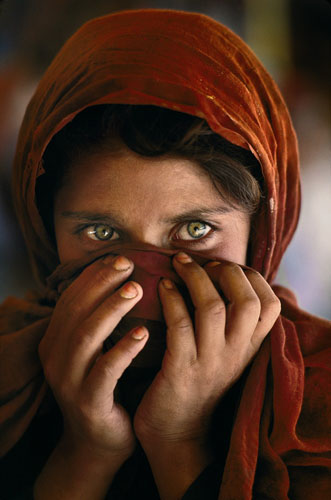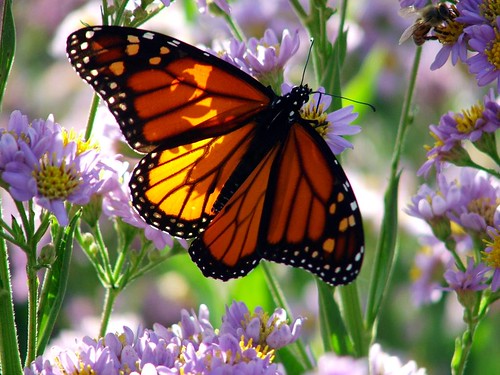Five useful ideas and themes I found in the DVD:
1) Patience - In certain circumstances, it can be useful to take multiple photographs of the same thing from slightly different angles or with slightly different settings. Sometimes you have to sacrifice many photos in order to achieve one spectacular shot (like the photoshoot with Jane Goodall).
2) Persistence - Sometimes the best photographs come out of impossible difficult, uncomfortable, dangerous, or painful situations. The example that comes to mind is the scene where Nick Nichols was taking photos in the rainforest and the flies were swarming in his face.
3) Layering - One of the things I've noticed about National Geographic photographs is that they almost always have depth and layering. They're never flat, even if they're simple. They give the impression of three dimensional space. This often seems to be accomplished by having multiple horizons (like a field, a mountain, and a cloud bank, one after another).
4) Focusing on eyes - The most powerful part of the face is undeniably the eyes, and if you can capture the emotion within them, you can change your entire photograph. My favorite illustration of this principle is the image of the hooded Afghan girl by Steve McCurry.
5) Choosing subjects that have feeling - Every photograph I saw in that movie had a story or a meaning to it that I could instinctively feel in just one glance. I think that a photographer has to choose subjects that give him or her that feeling of awe or inspiration that Henri Cartier Bresson was such an expert at capturing.
My favorite photographer:
Choosing a favorite is nearly impossible, for they all have such incredible talent and have unique fortes. I think I'd have to pick Steve McCurry, however, because his photographs stand out to me the most. I envy his gift of photographing people; I think part of the reason he is so talented is because he has mastered the art of shielding himself with the camera lens. This idea that we talked about fascinated me - I don't think I could ever be bold enough to go up to people the way he does. He also uses color with incredible taste - the brightness always captures my attention.
My favorite photograph:
My favorite photograph is the portrait of the little boy in Peru, wearing patchwork clothes and a tear-streaked face, with his flock of sheep dead in the background, killed spitefully by someone who drove a taxi through them all. The incredible depth of emotion in this image (taken by William Albert Allard) is impossible to ignore. I think the reason it's my favorite is because the story behind it was so compelling that National Geographic readers sent in enough money to give the boy a new flock of sheep. If I were to become a photographer, I would want my work to make a difference in the world like this photograph did.
All of the photographs contained elements of photography that we've learned in class - the subtle but powerful rule of thirds; the artistic use of framing to emphasize a subject; the tricks of using dramatic lighting to highlight a person's face; the creative use of lines to draw the viewer's eye; the photographer's endless quest to convey a message through the images he produces. I think above all, the National Geographic photographs put all of these elements together, which is what gives them such an intense, high quality.













 (Steve McCurry)
(Steve McCurry)







































